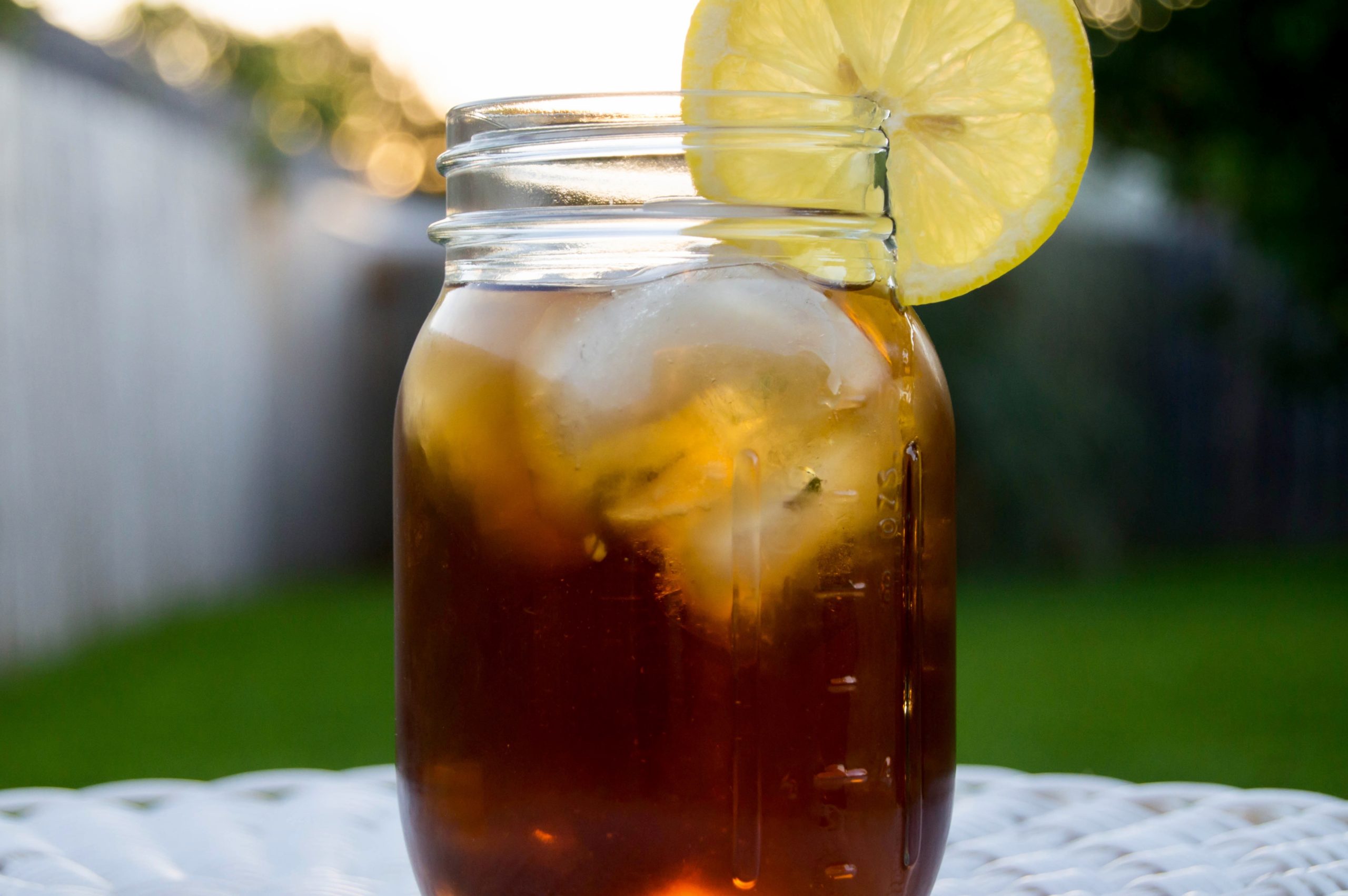Happy National Sweet Tea Day
The house wine of the South should not come in a can.

In Boston, they dumped it into the harbor; in the South, we pour it up into washed-out pickle jugs and mason jars. Brewed strong. Mixed sweeter than young love. Poured over clinking cubes of ice. Cut with a squeeze of lemon. Served in a glass that sweats in solidarity with those who drink it down in the sweltering summer heat. Tea is the aqua vitae of my people, as ubiquitous in the South as honeysuckle and humidity.
People from elsewhere call it “sweet iced tea.” But home folks cut through the redundancy since for us it only comes in two varieties: sweet and “diabetus.” While it is often drunk year round as the perfect companion to the simple fare of the Southern table, it is really a summertime elixir. A cold glass on a hot day is the country man’s cocktail.
Our Northern neighbors get much of the credit for popularizing tea as a political instrument, but tea was first planted in the New World in Charleston, South Carolina. In 1795, French explorer and botanist Andre Michaux introduced tea leaves with the hope of satisfying the wealthy Charleston planters. At the time, South Carolina was the only colony in America growing tea plants. Every September, Summerville, S.C.—the “Birthplace of Sweet Tea”—hosts a festival to commemorate their contribution to the world.
Contrary to popular opinion, sweet tea was not an invention of the 20th century. On September 28, 1890, the Nevada Register, a small newspaper in Nevada, Missouri, ran a story about a recent reunion of Confederate veterans. The account included details of a large barbecue held on the first day of the meeting: “There were 4,800 pounds of bread, 11,705 pounds of beef, 407 pounds of ham, 21 sheep, 600 pounds of sugar, 6 bushels of beans, 60 gallons of pickles, and a wagon load of potatoes. It was all washed down with 2,200 gallons of coffee and 880 gallons of sweet tea.”
Though the 1904 World’s Fair in St. Louis likely gave rise to the popularity of iced tea as a nationally known cold beverage, recipes for sweet tea were already being published as early as 1879. Richard Blechynden, a tea plantation owner and merchant, was hoping to attract passersby with his brew. The high temperatures made hot drinks unappealing, so Blechynden dumped buckets of ice into his vats of tea. It was an instant hit.
By 1914, folks all across America were buying tall glasses, which became commonly known as iced-tea glasses, as well as long spoons suitable for stirring sugar into their tall vessels. Six years later, sweet tea received another boost, this time from the federal government. When Prohibition struck in 1920, “tea rooms” sprang up all over the country as people sought legal alternatives to beer, wine, and hard liquor.
In the 1930s, the Tennessee Valley Authority brought electricity to many parts of the rural South that previously had to make do with only sunlight and hand-pumped wells. With the advent of electrification came refrigeration. And for the first time, the common man living in the holler could enjoy a commodity heretofore available only to rich townsfolk: ice. Soon after, sweet tea became a mainstay in homes all across the South.
Some Southern states even enacted legislation to codify sweet tea’s pride of place in the cultural landscape. For instance, Sweet Tea is the official beverage of South Carolina, and in 2003, Congressman John Noel of Georgia introduced legislation that would require every restaurant in the state to serve tea as it was meant to be enjoyed: cold and sweet. While it may not technically be illegal in Dixie to serve tea piping hot and absent any sugar, it would still be considered borderline criminal by most. A glass of tea is as much an institution as it is a beverage. It may not be a holy sacrament, but it does symbolize a sacred history, invoking the real presence of kith and kin.
In the South, sweet tea transcends color and castes. It has historically been enjoyed by poor blacks and poor whites right alongside wealthy aristocrats and the big muckety-mucks. Just as the former drank it from jars and tin cups around rough-hewn tables of knotty pine, the latter sipped it from highball glasses while listening to Little Sister play the violin out on the veranda. One might even say that it has been a civilizing force since it has been the choice beverage in hand as folks sat around and talked for hours on end—the true sign of conviviality.
A few years ago, some bonehead had the bright idea of putting sweet tea in a can. Over the last decade, the sale of pre-made iced tea has spiked, and it is estimated that it now rakes in more than $5.2 billion a year. Some might call this progress. But I am not one of them.
Besides the fact that it tastes like wash water after seven rounds of Saturday baths in the same tub (and the fact that it hails from some far-flung territory like Arizona), tea in a can should be roundly rejected on humanitarian grounds. Life is too short, the weather is too hot, and neighbors are too precious to pop a top and serve aluminum tea.
Subscribe Today
Get daily emails in your inbox
Sweet tea is the house wine of the South, and every blue-haired grandmother is a sommelier. And I say it is a violation of the Fifth Commandment, which bids us “honor our fathers and mothers,” to let the art of brewing tea go the way of the cotton sack.
*June 10th is National Iced Tea Day
Comments